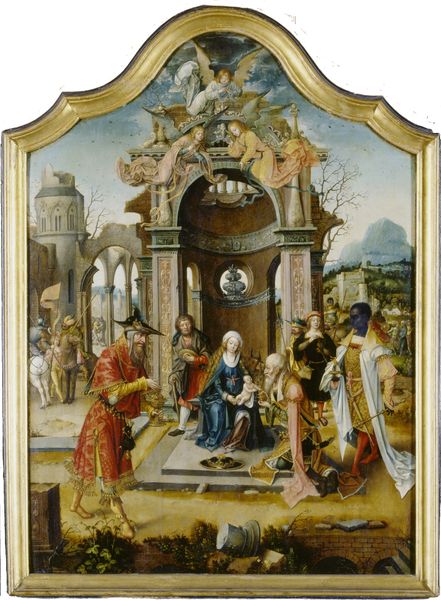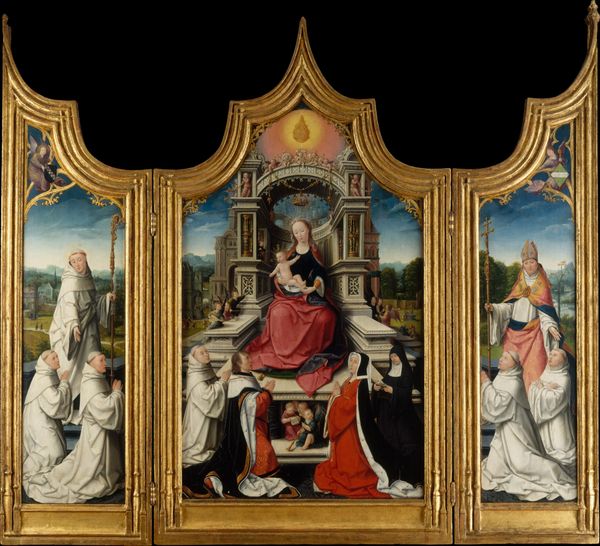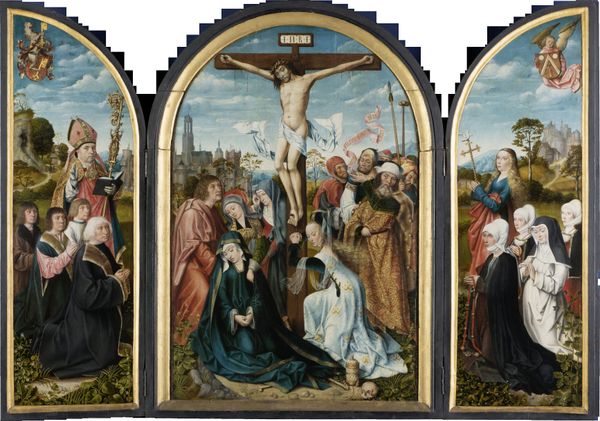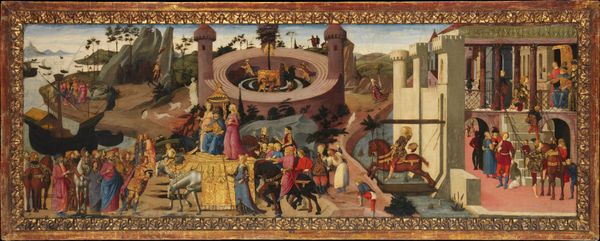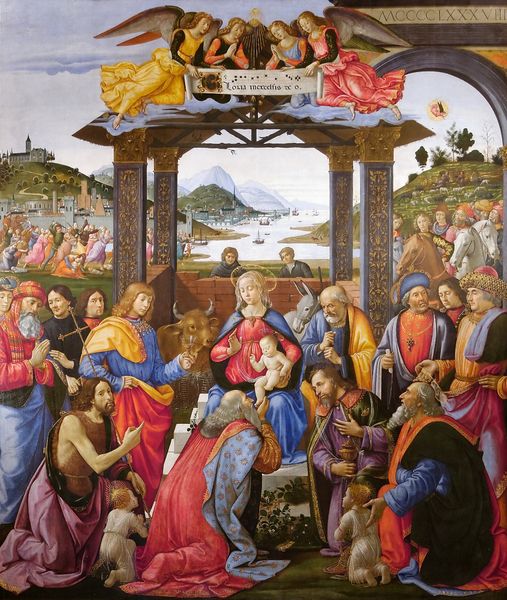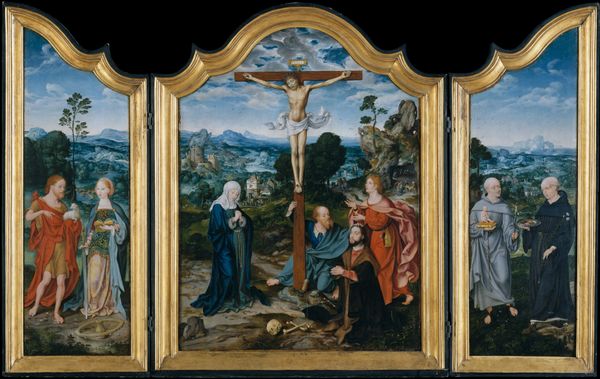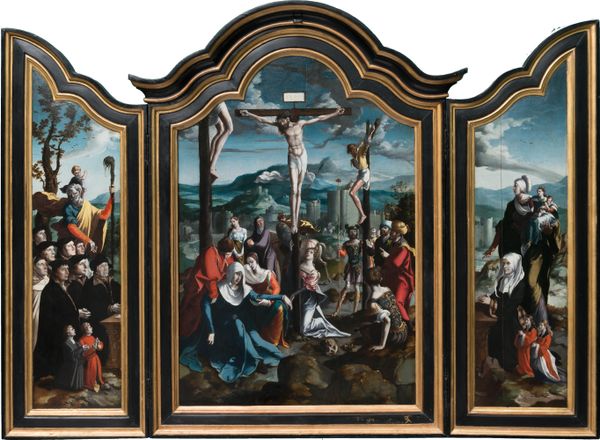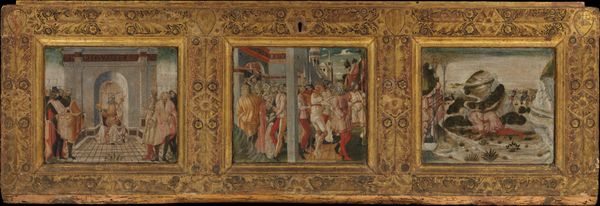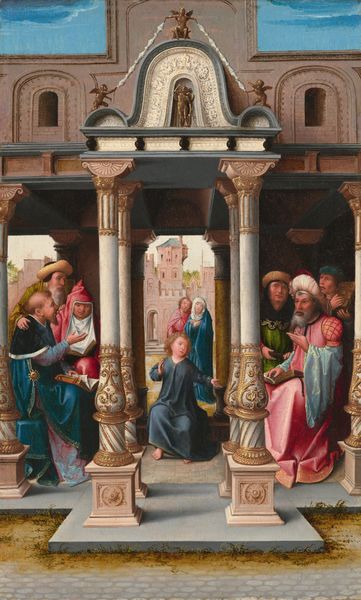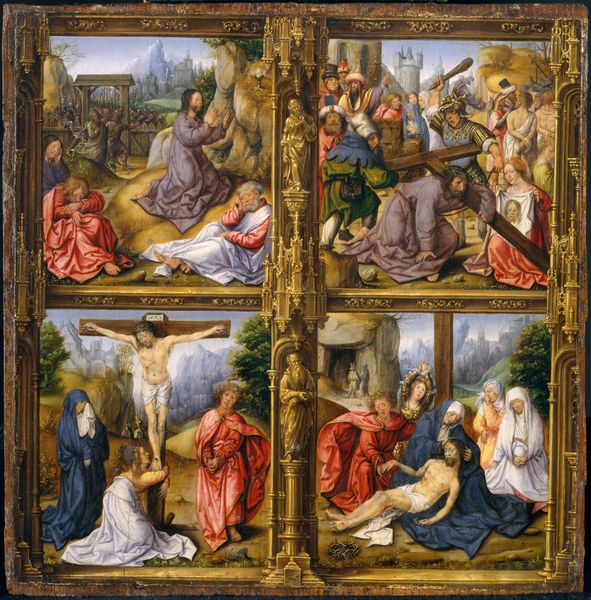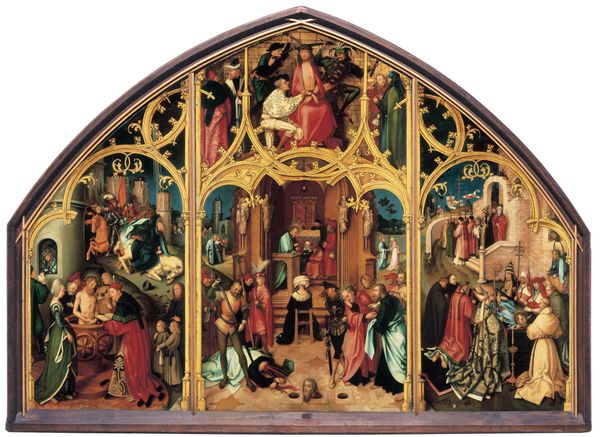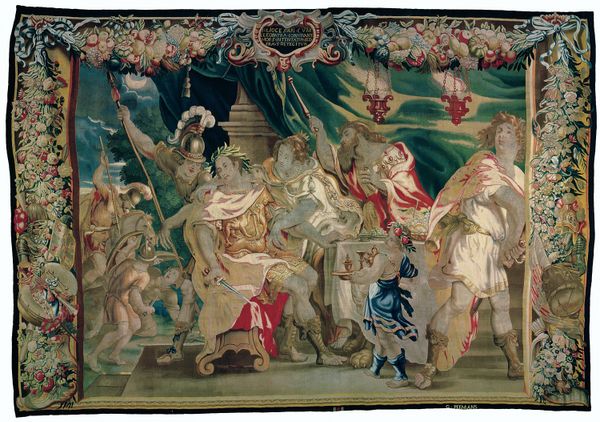
Triptych with the Adoration of the Magi and Old Testament Scenes 1516 - 1519
0:00
0:00
panel, tempera, painting, oil-paint
#
panel
#
allegory
#
narrative-art
#
tempera
#
painting
#
oil-paint
#
perspective
#
figuration
#
11_renaissance
#
oil painting
#
13_16th-century
#
history-painting
#
miniature
Dimensions: max. 114.6 x 169.8 cm
Copyright: Städel Museum, Frankfurt am Main
Curator: Let’s explore this captivating “Triptych with the Adoration of the Magi and Old Testament Scenes,” created sometime between 1516 and 1519. Though the artist remains anonymous, this tempera and oil on panel work is quite striking. Editor: Yes, I'm immediately struck by the complexity. There’s so much going on! The sheer density of figures and architectural details creates a rather busy visual field. What narrative threads are interwoven here? Curator: Precisely. It uses a triptych form to connect the Adoration with scenes from the Old Testament. Notice the careful juxtaposition, for example, of the presentation of gifts to Christ with images of earthly rulers. Editor: The panel on the left depicts a man with his foot over a monkey, but how exactly do these images speak to each other? There seems to be an allegorical connection. How are these different acts of worship of equal merit? Curator: The triptych served as a pedagogical tool in the 16th century, making such visual links. The anonymous artist here constructs a history painting but does so for the purposes of an allegory. Perspective is used as a narrative and compositional device to compress and highlight the thematic linkages. Editor: Looking closer, there's an interplay between religious narrative and clear class distinctions. The lavish clothing, the imposing architecture... the structure is literally holding the composition. Curator: Exactly. The church in the early 16th century very much depended on such elaborate forms of display. Note how the patrons in attendance, and the architectural backgrounds all contribute to a message about worldly and spiritual power, and the importance of both to the narrative of the Nativity. Editor: And I am challenged by how relevant this artwork remains to today's power dynamics and representations of wealth in institutions. Curator: Ultimately, I see this triptych as revealing the complex relationship between artistic production and its historical reception. How these images actively participate in religious and social formations. Editor: A vital point that contextualizes the layers of meaning present, prompting reflection on the ongoing dialogue between then and now. Curator: Precisely. Thank you for highlighting how artworks act in history and remind us how history repeats.
Comments
stadelmuseum about 2 years ago
⋮
In the sixteenth century Antwerp, a major trade metropolis, became one of north-western Europe’s leading art centres. Among its many painters’ workshops were a number of studios that worked closely with one another. For want of a better name, the respective artists are collectively known as the ‘Antwerp Mannerists’. One of their main representatives, the ‘Master of the von Groote Adoration’, was named after this work. Here, he depicted the ‘Adoration of the Magi’ in a wealth of detail, accompanying it with two Old Testament scenes that serve as a commentary.
Join the conversation
Join millions of artists and users on Artera today and experience the ultimate creative platform.
